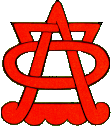|
"A
synthetic and fundamental work, which not only deals with the Precolumbian,
its cosmogony and theogony, but constitutes an introduction to symbology,
and sacred cosmology. Federico González offers us the opportunity
to understand, in their essentials, the ancient American cultures, as well
as the "primitive," archaic, and traditional cultures in general. The symbolical
sacrality of nature (rocks, trees, animals, stars), myths, the architecture
of the temple and the city, calendars, agriculture, maize (like wheat in
other places), crafts, games, and the art of war, music and songs, paintings,
tattooing, and dances, sacrifices and festivals, mold, for traditional
man-in particular, here, for Precolumbians-their daily experience of the
sacred, their knowledge of cosmogony, which reveals itself by way of symbols,
myths, and rites, and which they know and re-create through the same-however
surprised we may be at the extraordinary forms adopted by a culture that,
like all that is living, acknowledges the deity-and life-in perpetual astonishment.
For it is the sacred that shapes its own expression-that of the world and
our own-and not the other way around according to the programming that
has been imposed on us. 'These symbols are present today,' the author declares,
'only waiting to be called to life.' " |

